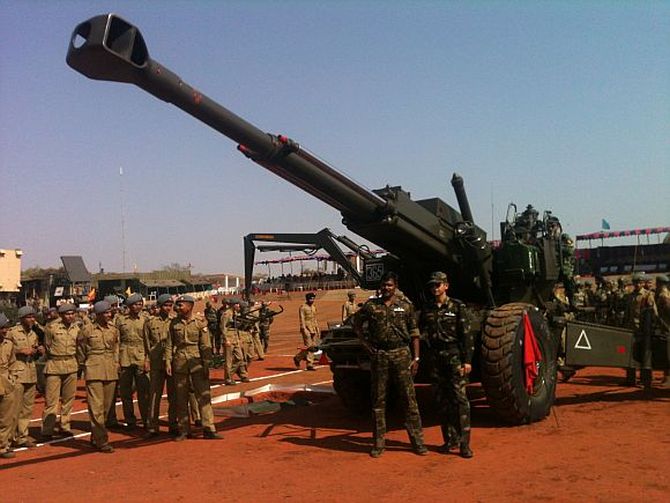Prevention is better than cure. Prevention involves advance preparations. With defence minister Rajnath Singh reaching Russia Tuesday, his aim is two-fold. One, to attend the 75th anniversary of Soviet Union’s victory over Nazi Germany in World War II and second is reportedly to expedite supply of defence wares including delivery of Sukhoi and MiG 29 fighter jets under an emergency arrangement. In other words, when enemy is knocking at the door, we are scurrying around to fetch weapons for our protection.
It is well-known that India’s military might is far less compared to China’s in most terms, including in critical airpower. The energy and zeal of our soldiers seem to be our only treasured strength. But wars are fought mainly in the skies in this new age. India has a moderate number of fighter jets, minimum nuclear arsenal that can never be used against an enemy like China, and an ill equipped ground fighting force. Fact is that India and China were on equal footing in military strengths at the turn of the century 20 years ago. With massive economic growth, China’s resources increased, which it used for beefing up its military. India sat blinking through.
An errant neighbour’s growing strength should be a matter of worry. China attacked India in 1962 and India lost a large tract of land. Simple logic suggests that this could happen again unless India is prepared. The Galwan incident is a pre-cursor to more bad times. China has been observed to be taking special interest in courting all nations in India’s neighbourhood with great frenzy, its obvious aim also being to isolate India with a necklace of nations with ports and roads strategically encircling India. The signals were all too clear. Sadly, India failed to read these signals.
India must blame itself for many of its follies. No single weapons acquisition by the Indian defence ministry has been above board. Starting from the publication of intent to purchase, the bidding and evaluation process all take incredibly long periods of time, which often make the to-be-acquired weaponry obsolete. From Bofors to Rafale, every government has mud on its face. Even after the Modi government came to power in 2014, India has been unable to acquire any single new piece of weapon or defence system during the past six years. While much political talk veered around the soldier standing at Siachen glacier, the government has not bothered to acquire high altitude garments and shoes for the army.
In the past, Bofors became subject for a political tumult for a couple of decades, and nothing came of the investigations. Also, Indian soldiers are still making do with Bofors guns, which have become antiquated, and replacements have not come in. The Rafale deal went through another season of slugfest, and reached court, further delaying acquisition.
Lack of transparency in defence deals is a big problem. The UPA periods saw a criminal holiday for defence acquisitions. Defence minister AK Antony did too little on this. He and his political bosses failed to see the need for building India’s military might. That was a period of complacency. While there was palpable disinterest on the part of former Prime Minister Manmohan Singh in strengthening India’s defence forces, present Prime Minister Modi also has largely trusted his individual access to leaders like Xi Jinping of China rather than building the nation’s capabilities.
Question will arise as to how much has Modi as PM done in the last six years to strengthen the defence force other than earmarking moderate sums in annual budgets.
To come back to Rajnath’s trip to Russia, the message is loud and clear that Indian forces still consider Russian made weaponry to be viable defence equipment. Interestingly, while the defence minister has travelled to Moscow to hasten purchase of aircrafts, recent past events show that this deal was most likely languishing buried in some files in New Delhi. Probably, the Modi government was disinterested in the Russian made equipment since no private corporate would take interest in building those aircrafts in India unlike the Rafale. When such considerations become top most, defence of the nation takes a beating.
